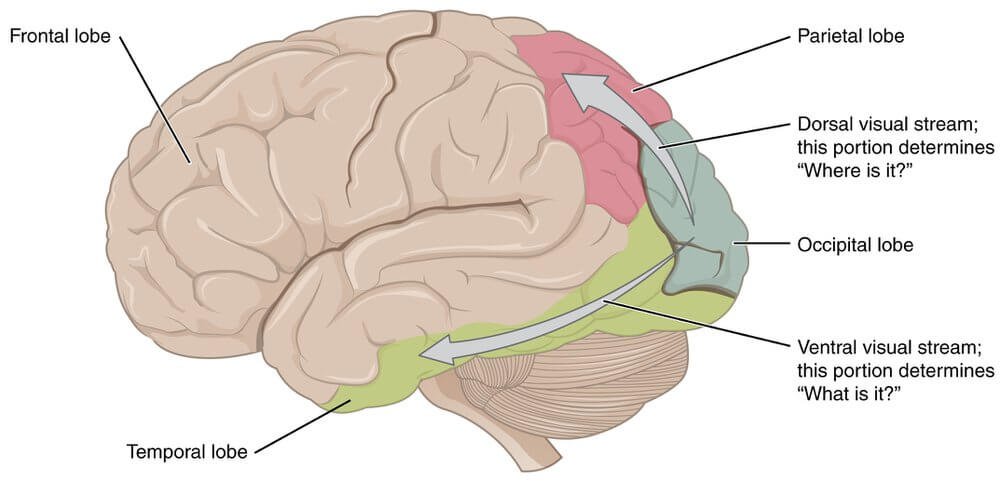
All you need to know about visual cues in your online marketing
Our world is a hectic place. Everywhere we look we can see new things. It is impossible to pay attention to all of these visual stimuli. It demands too much time and energy. That is why our brain has developed shortcuts. The most distinct stimuli must be the most important for our survival and therefore they directly attract our attention. Thereby visual cues have a great influence on our behavior.
Visual cues guide our attention and behavior. In this article, we will explain the five most effective visual cues and examples of how to use them. Small adjustments and implementation of (more) visual cues in the design of your marketing strategy will increase your conversion.
Back in the days
Our ancestors had to detect the red berries in the bushes and a poisonous snake in the grass to survive. You’d starve if you couldn’t find enough berries or be poisoned by the bite of a snake.
Nowadays we are exposed to an overwhelming amount of visual stimuli in our environment. People in a crowded city, cars waiting for the traffic light, notifications on our phone or smartwatch, or birds in the sky. Our world changes very fast and the stimuli that deserve a bit of attention have changed as well. Yet, our brain practically works in the same way as it did two hundred thousand years ago.
Visual cues in the brain
To gain a good understanding of visual cues and their power in advertisement, it is beneficial to understand how our visual system operates. Before we direct our attention to a visual cue, a lot of different mechanisms and brain areas have processed the incoming information. We won’t focus on all specifics into detail. The basics will suffice to help you understand how and why visual cues work!
The visual cortex
All objects in the environment reflect light beams. When this reflected light reaches our eye, the retina converts the light into neural signals. Via the optic nerve, these neural signals reach the primary visual cortex (also known as V1), located in the lower part of the back of our brain. Our brain does not identify those neural signals directly as a dog, flower, or a human face. The neurons recognise nothing but a small dot.
The primary visual cortex sends this information to other brain areas. These different areas combine all small pieces of information. Every step down the road processes the data a bit further.
All the little dots are combined to stripes, these stripes form outlines, and the outlines form recognisable objects and people. Of course, we are not aware of this process. When the image reaches our conscious mind it is clear we are looking at a dog. But how does that exactly work?
Two different pathways
A popular representation of the visual system distinguishes two different pathways. The pathways are each specialised in different forms of visual processing. We call the pathways the ‘what-pathway’ and the ‘where-pathway’.
The what-pathway
The ‘what-pathway’ specialises in the detection of small details and high spatial resolution. This route allows us to recognise colors and fine lines. These characteristics enable us to form an accurate perception of the objects. That is how we read and recognise an object. This pathway is also responsible for the identification of faces, either from someone we know or not.
The where-pathway
The where-pathway can quickly form a perception of the scene. In contrast to the what-pathway, this pathway doesn’t enable us to specifically identify an object. It considers the spatial location and movements of objects relative to each other and ourselves. This pathway also specialises in recognition of bodies and movements of our limbs. The where-pathway processes information much faster than the what-pathway. Thus, the where-pathway enables us to act quickly in unexpected situations.

Keeping this information in mind, the following will provide an overview of the most important visual cues; motion, lines and arrows, contrast, faces, and self-relevance.
Motion
It is essential for survival to quickly detect motion in your surroundings. It benefits you to see a snake snapping at you, or a car racing towards the crossover.
Our primal brain mechanisms have hardly changed in the history of the Homo Sapiens. We quickly detect motion and movements. Moving objects are processed via the fast where-pathway. Even though snakes in the grass are (for most people) not a daily threat anymore, movements in our surroundings are effective cues to direct attention.
Our brain prefers to spend as little energy as possible on information processing and decision-making. From an evolutionary point of view, movements are quickly processed to steer behavior in the right direction.
The importance of video’s, infomercials, or animations in marketing strategies is increasing. GIFs and other moving elements on the landing page or newsletter catch attention and causes your customers to act upon these moving objects.
Arrows and lines
Intuitively we know that arrows are very important guidelines in a visual scene. Our eyes follow the direction the arrow is pointing towards.
It’s a well-known technique to have an arrow pointed towards your Call to Action. Lines also serve as a useful visual cue on a more abstract level. When two lines come together and create the illusion of a triangle direct our attention to the smallest point. Many of you CRO-experts will recognise this as a funnel.
But arrows and lines can be used in other scenario’s too. The white, interrupted lines that separate the lanes on the highway appear to be closer to each other, the faster you drive. Yet, as you know, this is just a perception. Even though you are aware that it’s a perception, you will probably reduce your speed. It’s a sensation that can be used ethically, with results that benefit everyones safety.
Some parts of the highway, where the speed limit is easily overstepped, the white stripes are actually painted closer to each other. Therefore drivers perceive their speed higher than it is. This makes them automatically reduce their speed, and thus more safety on the road.
Contrast
Outstanding features easily catch the eye. A bright red button on a white background is more obvious than a grey button. That’s why you want your buy-button to pop out of the page. Words printed in bold are recognised better when you scan the text and a Call to Action turns to action smoother when it is large and placed prominently in your advertisement.
The use of high contrast is related to the perception of colors. Bright colors stand out. That is how you can redirect to focus point of your customers. But, you can benefit from the opposite effect as well. Low contrasts and small features are not easily seen and won’t be receive a lot of attention.
Faces and bodies
Human beings are social creatures. Working together and cooperative behavior are essential for us to survive. Like the detection of movements, the detection of other human beings is easy and effortless. We direct our attention especially to the face and eyes of others. One of the first things that we directly pay attention to when seeing a human face are the eyes. The eyes ‘reflect the soul’ and are an important feature to identify someone’s emotions and therefore are necessary for social cognition.
Following the eyes
Research found that newborns focus on the eyes of a human face as well. The baby’s eyes follow their gaze directly. We automatically pay attention to the things other people are looking at. This principle is called gaze following.
It is not complicated to apply this principle to your marketing strategies. Make the people in the pictures look at the part of the scene you want the attention of your customers to be. Whether their eyes are focused on the subscribe or buy-button, or leading your target group to read further, your customer’s gaze is more easily directed to this spot. Their behavior is easier guided in the direction you desire, increase your CRO and your sales.
Self-relevance
Have you heard of the cocktail party-effect? This effect implies how you are prone to hearing your name mentioned in a room filled with conversations and rumours. You subconsciously perceive this piece of information to be relevant to you and you pay attention to it.
Anything we can relate to ourselves, we pay more attention to. We also remember this information better and longer. This self-relevance also applies to gender, profession, interest, and hobbies. Research has shown that women pay more attention to advertisements with female models with all kinds of body shapes, which make them believe they can control their weight. People also better remember birthdays of others that are close to their own and have a better recall of words or events they feel related to. Self-relevance also explains why personalised e-mail marketing is effective.
Combine to succeed
The visual cues increase in their effectiveness when they are combined. A person looking at the buy-button, which is red and large will have more effect than just coloring the button a bright red. And an e-mail, reminding you that you still have some items in your shopping cart, will catch your attention sooner when you include a funny Giphy.
But it is important to make sure the use of the visual cues matches the frame or context of your message. Take into account which emotions you want your messages to evoke. In emotional marketing it is important to be wary of the possible backfiring by using the wrong emotions. Which target group do you want to attract? What kind of pictures, GIFs, and the combination of all the above do you need to apply to achieve this?
If you want to learn more about behavioral insights, read our blog or watch 100+ videos on our YouTube channel!
About Neurofied
Neurofied is a behavioral science company specialized in training, consulting, and change management. We help organizations drive evidence-based and human-centric change with insights and interventions from behavioral psychology and neuroscience. Consider us your behavioral business partner who helps you build behavioral change capabilities internally.
Since 2018, we have trained thousands of professionals and worked with over 100 management, HR, growth, and innovation teams of organizations such as Johnson & Johnson, KPMG, Deloitte, Novo Nordisk, ABN AMRO, and the Dutch government. We are also frequent speakers at universities and conferences.
Our mission is to democratize the value of behavioral science for teams and organizations. If you see any opportunities to collaborate, please contact us here.
